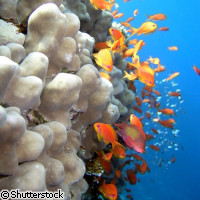Marine calcification investigated
A new EU-funded project is set to investigate how marine organisms form shells, bones and other structures made from calcium carbonate such as coral reefs. The research will focus on the impacts of environmental changes on the calcification process. The CALMARO ('Calcification by marine organisms') project is financed to the tune of EUR 2.7 million by the 'People' Specific programme of the Seventh Framework Programme (FP7), and brings together 13 research institutes and 4 companies in 8 countries. The project is a training network, and throughout its four year duration 12 biologists, chemists and geoscientists who are just embarking on their research careers will investigate the formation of calcium carbonate in a range of marine organisms and the influence of factors like sea temperature and acidity on this process. Calcium carbonate is one of the most important substances in nature, as it makes up bones, shells and coral reefs. Environmental factors such as temperature and pH (acidity) influence the ability of marine organisms to form calcium carbonate. Currently, rising CO2 (carbon dioxide) is causing the oceans to become more acidic, while climate change projections indicate that ocean temperatures are likely to rise over the coming decades. 'The network offers a foundation for a successful start into a career for junior scientists, thanks to the international cross-linked training,' commented Project Coordinator Dr Nicole Schmidt of the Leibniz Institute of Marine Sciences (IFM-GEOMAR) in Kiel, Germany. 'The senior scientists will always come from a different country than that of the early-stage researcher. Thus, the young scientists will get to know several institutes right away.' Furthermore, the involvement of four small- and medium-sized enterprises (SMEs) in the network means the young researchers will have the opportunity to see some of the practical applications of marine research, for example at an oyster farm, an aquaculture business and in companies that specialise in coastal consulting and the production of instruments designed to analyse CO2 levels. 'Hence, the participants will discover that a fascinating academic topic has an immense applied meaning for the future,' commented Dr Schmidt. In the framework of the CALMARO project, the young scientists will study calcification at a range of levels. On the cellular scale, they will study the genes and proteins involved in calcification. Other studies will focus on the effects of acidity on coral growth, and on the ability of oysters to lay down their shell, for example. Elsewhere, researchers will investigate how oceanic acidification will affect predator-prey relationships, as many organisms use calcified structures (such as shells) to protect themselves or, in the case of claws, attack other organisms. Regional differences in calcification will also be studied.



